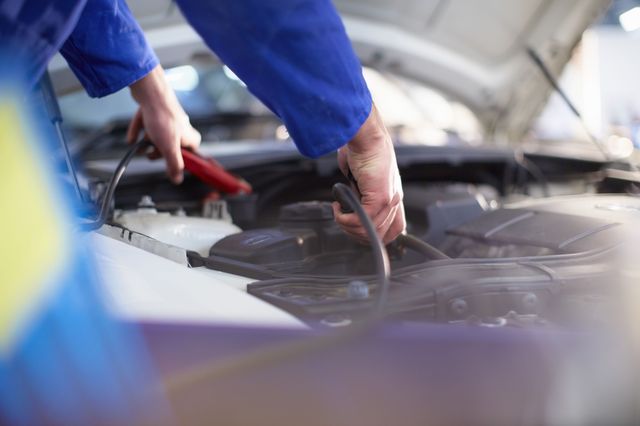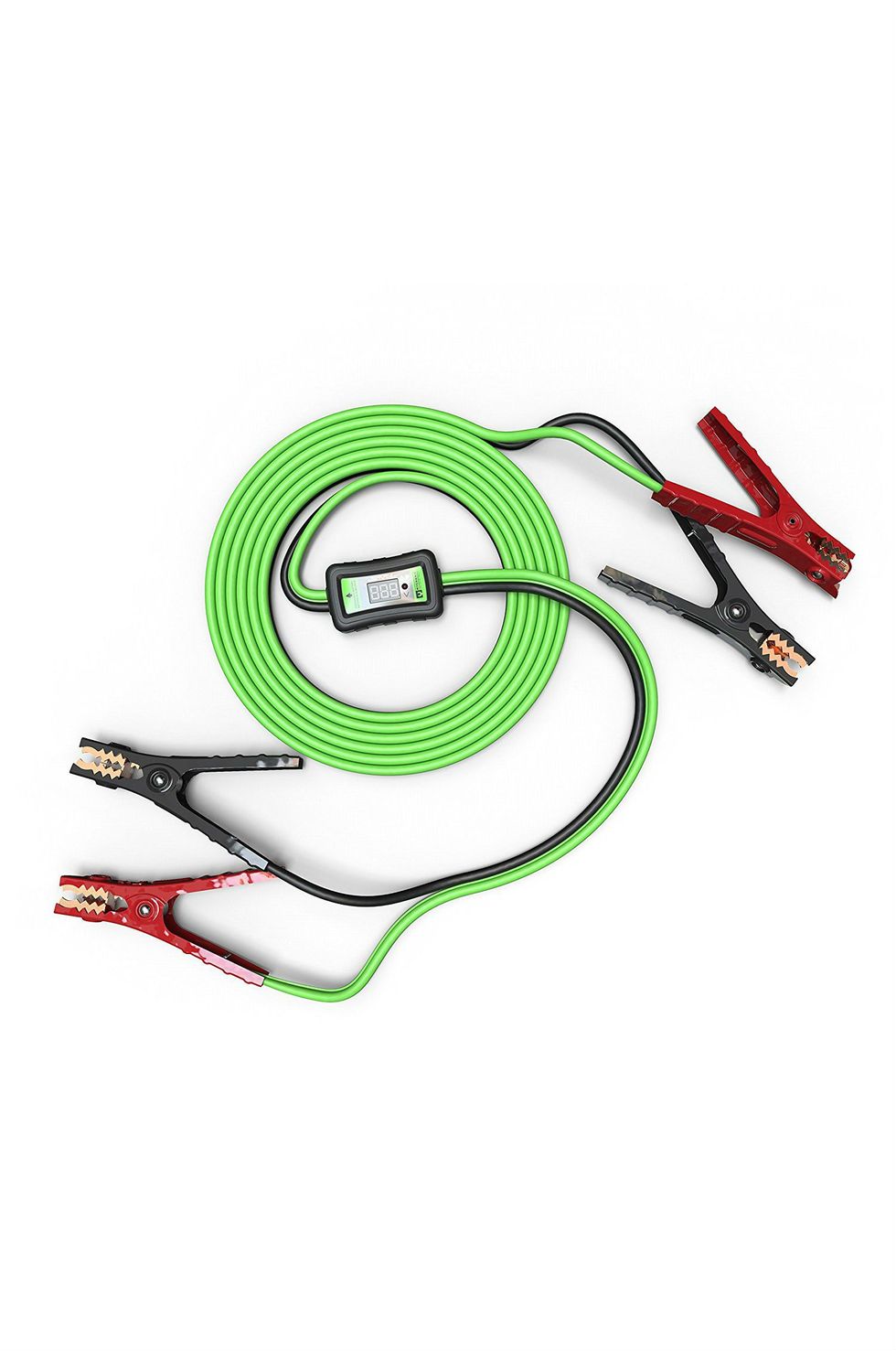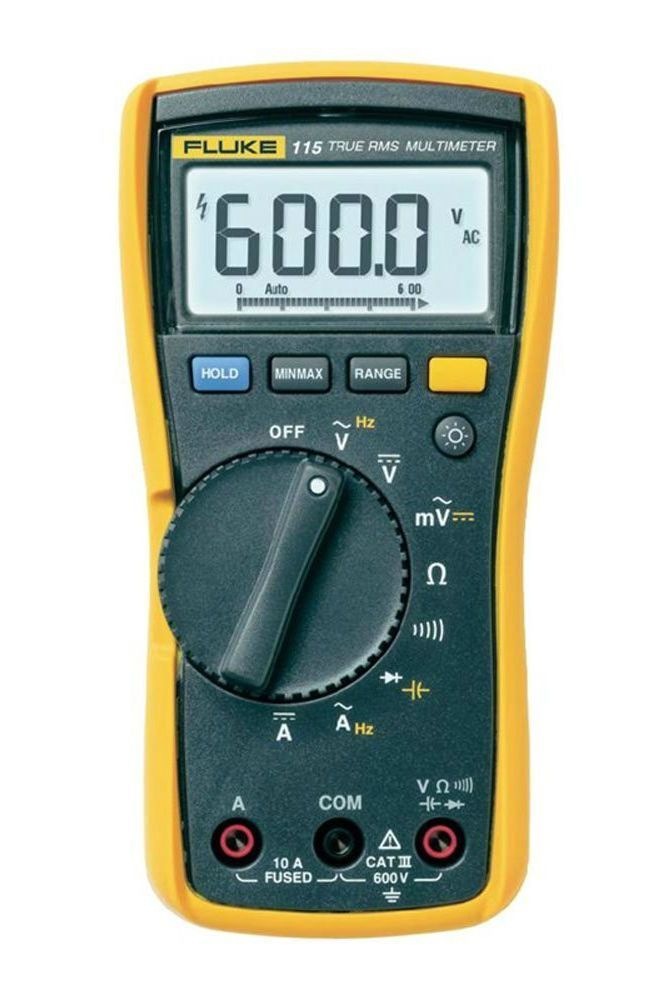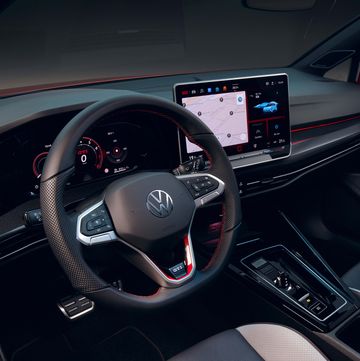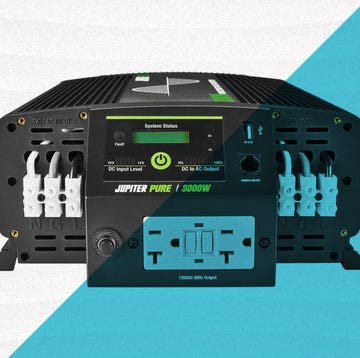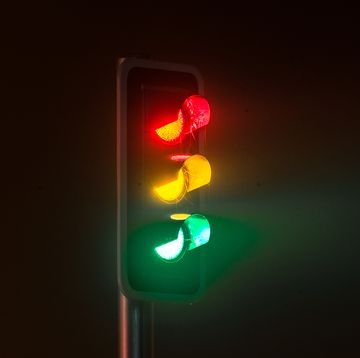A dead battery happens to all of us. We take care of our cars and are diligent with service, but accidentally leaving an interior light on overnight creates a big headache the next morning.
But if you know what to do next, jumping or replacing a battery doesn’t seem like such a daunting challenge. Although jumping will usually do the trick, older and less healthy batteries could end up causing all sorts of issues. Here what to do if you have a lifeless car on your hands.
If Your Battery Is New(ish)
With your battery still being new (car batteries have a lifespan of approximately six years), a jumpstart should be all you need to get going. This solution assumes you have jumper cables or a standalone jump started stashed away in the truck. Since the battery is healthy, it’ll receive power from the other battery, and then charge up properly.
Begin by parking and turning off the car with the charged battery next to the dead one. Pop both car’s hoods and get the jumper cables out. You should also protect your hands and eyes in case something goes wrong.
Now, connect one end of the red (positive) jumper cable to the red post of the dead battery. And then connect the other end of the red cable to the red post of the charged battery. Next, connect one end of the black (negative) jumper cable to the black post of the charged battery. And the other end to an unpainted metal part in the dead car away from the battery. This grounds the circuit to prevent sparking.
At this point you’re ready to start the car with the charged battery. Let it run for 5-10 minutes. After waiting, go ahead and try to start the car with the previously dead battery. If it starts, let it idle for at least 20 minutes if you don’t plan on immediately driving. If you do take off right away, drive for at least 5-10 miles to completely charge the battery back up.
Before taking off though, remove the battery cables in the reverse order they were attached. That means the black cable attached to the metal ground first, and so on.
If Your Battery Is Old
In short, a new battery is what you need here. However, it’s best to determine if it’s actually your battery and not something else before dropping over $80 on a new one.
There are a few common signs of a bad battery. One obvious sign would be the complete absence of any lights or cranking when you try to turn on the car. Another would be the engine cranking laboriously but not actually starting. This one is less clear, but more times than not, it’s the battery.
It’s easy to jump straight to towing the car to a shop if it won’t start, but you’ll spend less time and money by doing a little self-diagnosis.
Note that you’ll most likely be able to jump a dying battery to get somewhere, but there’s a good chance it won’t start under its own power if you try it again with the same bad battery (i.e. don’t strand yourself somewhere).
Sometimes the battery will be so damaged that it’s unable to take a charge for a jumpstart, too. The best way to find out for sure is by taking your battery somewhere that does free battery testing. Auto parts stores like O’Reilly, Autozone, and Advance Auto Parts will all do this—then you can buy a new one right there if need be.
What's Draining Your Battery?
Most vehicles draw some battery current when the key is off, thanks to the clock and the internal memory of engine computers, body-control modules, and radio presets. Altogether, they draw a very small amount of current. Fifty milliamps would be a safe upper limit for this, though many vehicles will draw less. If you're not sure, look up the correct rating in the service manual.
To measure the car-off current draw, you'll need a multimeter capable of reading current, preferably one with a 10- or 20-amp capacity, but a 200 milliamp lower scale. Start with a fully charged battery. Either make sure the doors are closed or wedge the door switch shut. Turning off the dome light isn't good enough—on many cars, an open door will activate several circuits.
Unplug any power-draining cables from the lighter socket, such as a cellphone charger or GPS. Even if the device itself is unplugged from the charger, the plug may still consume a few milliamps of current. Got an ear-bleedin' stereo amp in the trunk? Pull the fuse, because it may be in standby mode rather than completely shut down.
One caution: If your radio or antitheft system requires you to input a code after the power is interrupted, better hunt it down now. It's likely that you'll need it. Don't let the dealer entice you to bring the car in and pay him to input it. The code should have been included with the owner's manual when you purchased the car.
Start hunting by putting your ammeter in series with the battery's ground circuit. Disconnect the battery's ground cable and wire the ammeter in series between the battery terminal and the cable. Start with the meter on the highest range, probably 10 or 20 amps. Warning! Doing something silly, like trying to start the car or turn on the headlights—anything that draws more than the meter's rated capacity—can blow the meter's fuse.
Once you have determined that the current drain you're reading is safe, gradually reduce the meter's scale to the appropriate low range, probably 2 amps or 200 mA. You are now reading the parasitic drain on the battery. Some vehicles will show as little as 10 mA residual drain. Others, probably high-end cars with lots of high-end gadgets, will draw more.
An important note: Some devices, like alarms and automatic-dimming lights, will draw substantial amounts up to 20 minutes after they're deactivated. So if the reading is high, wait a few minutes to see if it changes.
Getting Rid of Bad Energy
You've determined you have excessive current draw from the battery. Now you have to figure out where. If it's not obvious, like the trunk light not going off, you have to get methodical. You can throw caution to the wind and start pulling fuses one at a time, until you see the excess drain drop off. Just be careful to get them back into the right socket.
Once you've determined the high-draw circuit, there still may be a half-dozen loads, each individually innocuous but collectively sucking the lifeblood out of your battery.
To zero in on that circuit or circuits, first reconnect the battery ground, taking care to maintain continuity through the jumpers until the clamp is making good contact. Then remove the offending fuse and use the leads of the multimeter to jumper the fuse terminals.
Next, with the help of the schematic diagram, disconnect each device on the circuit—one at a time—and check the meter. When the milliamp reading drops precipitously, you've found the problem. It could be anything, but in my experience, the following are the most common:
Car alarms: Aftermarket alarms are notorious for sucking even healthy, fully charged batteries dry within a few days. If you have any non-factory alarms, it's the first thing you should check. Be aware that there may be more than one connection to the car's electrical system, and some aftermarket installers may use, ahem, non-industry standard splicing techniques. So you may have to simply follow the alarm wires to see where they go. More expensive alarms tend to be less problematic, but maybe that's because more expensive alarms are installed by better, higher-paid technicians.
Stereos: OEM stereos are usually not problematic. Aftermarket stereos, the kind with giant, finned boxes and their own finger-thick wires directly wired to the battery, can be. With a power lead bypassing the car's electrical system, they go into standby mode, waiting for the main radio head unit to tell them to wake up. In standby, they'll draw only a milliamp or three. If they fail to go into standby, or if the DIP switches on the amp are set incorrectly, they can draw as much as several hundred milliamps, even though they're not producing any actual noise. Or music.
Proximity Keys: Guess how these things work. There's a radio receiver that continuously listens for the key's frequency. When the receiver hears a signal at its assigned frequency, it wakes up to see if the key is the one that matches the car.
This might be an issue if you leave the car parked for many weeks without starting it. Imagine the confusion of a car parked near the elevator door in a busy parking structure. Every proximity key that walks past makes it sit up and beg, draining your battery for a few minutes. Soon, dead battery.
Zac Palmer has been a car geek since he knew what a car was, and he doesn’t plan on switching hobbies any time soon.
